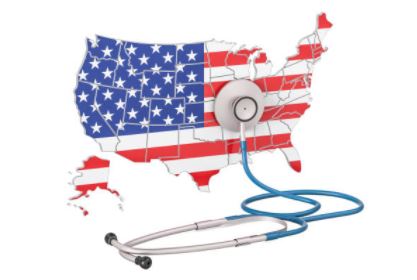health care transformation changes
This week your have due the first peer response to the first discussion: Health care reform and the role of the APRN. Your response should be professional, not only agree or disagree with your classmates but elaborate why or why not agree by using scholarly article, cite, and reference them on your response post.
This week will review the health care transformation changes and its impact on the nurse practitioners role. Review the articles sent in your syllabus for week 2 and your textbook.
I located this article by Phillips (2019) which address the latest legislative updates on the APRN across USA, included the estate of Florida. For your future practice as NP it is very important you understand your scope of practice and the legal portion concerning our practice.
Article: Phillips, S. J. (2019). 31st Annual APRN Legislative Update: Improving state practice authority and access to care. The Nurse Practitioner, 44(1), 27-55. doi: 10.1097/01.NPR.0000550248.81655.30
Peer Discussion:
The enactment of the Affordable Care Act (ACA) provided nurses with newer opportunities in delivering care and also being part of the reforms occurring in the healthcare industry. Nurses are required to do more in their roles in ensuring better patient outcomes and low-cost care is realized (Salmond & Echevarria, 2017). To better understand the roles of nurses’ practitioners and the impact they have in the process of healthcare reforms, several issues can be addressed.
Expansion of the scope nurses practice will allow them to fully practice in their education and also get the licenses to operate in various states. This will ensure that nurses will work with physicians and provide cost-effective care thus addressing the issues of shortages in primary health care. Nurses will thus use the opportunity to give their services and practice what they have been trained to do. At the same time, it will help redefine their competences and thus have the ability to meet the health demand in an increasingly diverse society (YouTube, n.d.). Through improved practices, they can focus on quality and safe services. Nurses should also have the ability to cater to a culturally diverse population and this will reduce the health disparities realized in the US.
Use of technology should be embraced to ensure there is on-time delivery of services. Use of technology goes a long way in bringing forth quality care to patients. They also help the nurse make informed decisions since they can easily track the medical history of the patient. Technology, when used appropriately, can be used to provide solutions and improve patient care. Nurses are engaged daily with patients and they come into contact with patients and thus they should be included in the process of making healthcare delivery better. Nurses need more leadership positions as they are the healthcare professionals actively dealing with patients (Sohpia, 2015). Nursing reforms and inclusions in the health reforms will in a huge way and thus ensure better health outcomes.
References
Salmond, S. W., & Echevarria, M. (2017). Healthcare Transformation and Changing Roles for Nursing. Orthopaedic Nursing, 36(1), 14. Retrieved from https://www.ncbi.nlm.nih.gov/pmc/articles/PMC5266427/pdf/ornur3612.pdf
Sohpia B. (2015, March 15). How Healthcare Reform Is Impacting Primary Care. Retrieved from https://www.ajmc.com/contributor/sophia-bernazzani/2016/03/how-healthcare-reform-is-impacting-primary-care
YouTube [Video file]. (n.d.). Retrieved from https://www.youtube.com/watch?v=cwTWhwWLzH


 For any questions, feedback, or comments, we have an ethical customer support team that is always waiting on the line for your inquiries.
For any questions, feedback, or comments, we have an ethical customer support team that is always waiting on the line for your inquiries.